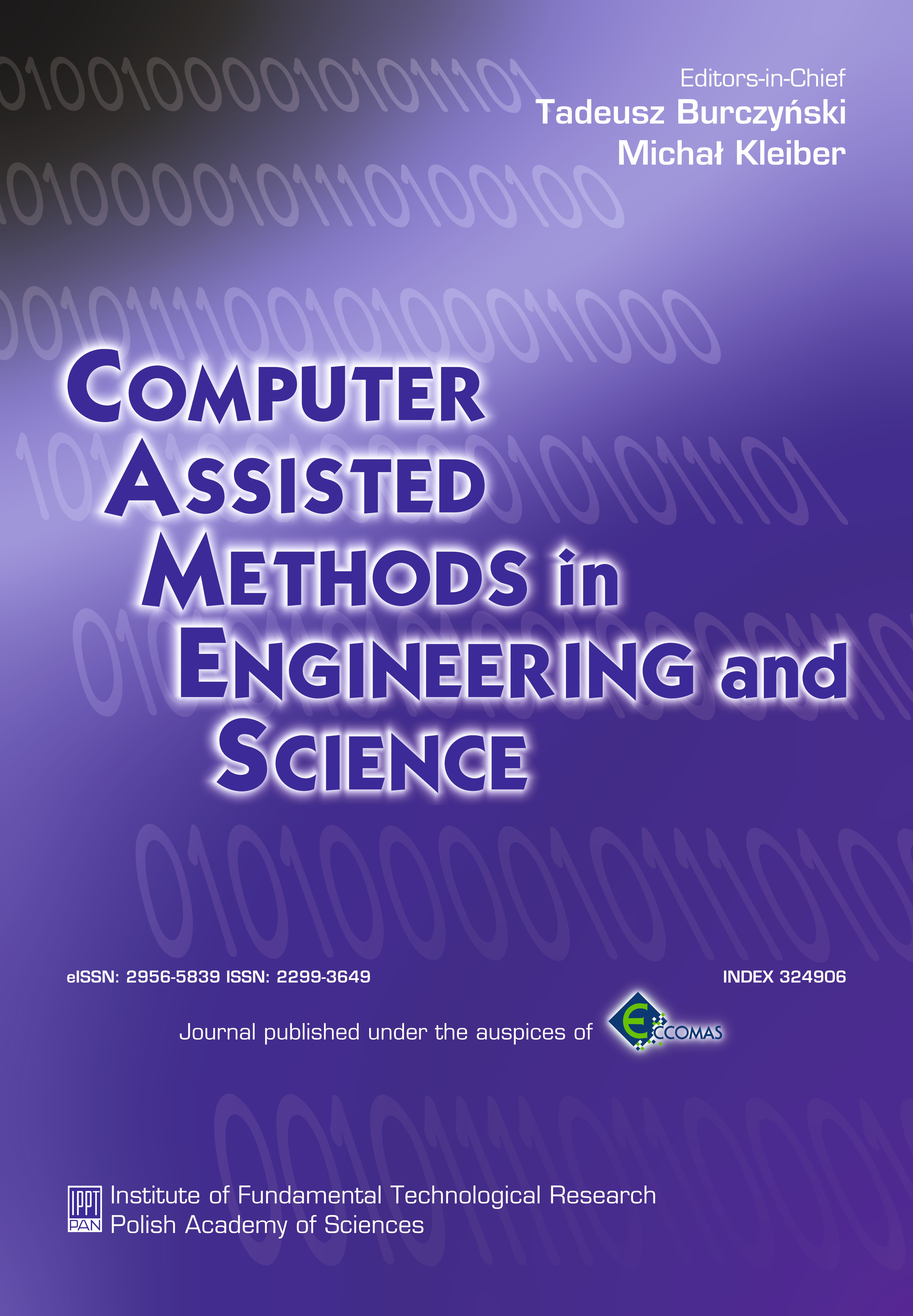Abstract
We proposed a method to analyze the galloping, a vibration by wind force, of transmission conductors. The Cosserat rod model was introduced to describe the motion of the conductor line. The deformation was tracked using the intrinsic framework of material coordinates which are able to handle the large motion in galloping phenomena. The Cosserat model provided a theory framework to simulate the non-linear coupling of the torsional motion and the translational motion. Such non-linear coupling was reported as one of the main causes for the galloping phenomena.
Keywords:
galloping, numerical simulation, conductor, Cosserat rodReferences
[2] J.P. Den Hartog. Transmission line vibration due to sleet, Trans. A.I.E.E., 51(4): 1074-1076. 1932.
[3] O. Nigol, G.J. Clarke. Conductor galloping and control based on torsional mechanism. IEEE. Power Eng. Soc. Winter Mtg., IEEE C-74016-2, 1974.
[4] K.G. McConnel, C.N. Chang. A study of the axial-torsional coupling effect on a sagged transmission line. Exp Mech., 324–329, 1986.
[5] A. Luongo, D. Zulli, G. Piccardo. On the effect of twist angle on nonlinear galloping of suspended cables. Comput. Struct., 87(15–16): 1003–1014, 2009.
[6] O. Nigol, P.G. Buchan. Conductor galloping – part 1, Den Hartog mechanism. IEEE. Power Eng. Soc. Summer Mtg., IEEE F-79714-7, 1979.
[7] O. Nigol, P.G. Buchan. Conductor galloping – part 2, torsional mechanism. IEEE. Power Eng. Soc. Summer Mtg., IEEE F-79715-4, 1979.
[8] C.B. Rawlins. Transmission Line Reference Book: Wind-Induced Conductor Motion. Electrical Power Research Institute. Palo Alto, California, U.S.A. 1979.
[9] P. McComber, A. Paradis. A cable galloping model for thin ice accretions. Atmos. Res., 46(1–2): 13–25, https://doi.org/10.1016/S0169-8095(97)00047-1., 1998.
[10] D. Burton, D.Q. Cao, R.W. Tucker, C. Wang. On the stability of stay cables under light wind and rain conditions. J. Sound Vib., 279(1–2): 89–117, https://doi.org/10.1016/j.jsv.2003.10.038., 2005.
[11] Y.M. Desai, P. Yu, N. Popplewell, A.H. Shah. Finite element modelling of transmission line galloping. Comput. Struct., 57(3): 407–420, https://doi.org/10.1016/0045-7949(94)00630-L., 1995.
[12] Q. Zhang, N. Popplewell, A.H. Shah. Galloping of bundle conductor. J. Sound Vib., 234(1): 115–134, https://doi.org/10.1006/jsvi.1999.2858., 2000.
[13] X. Liu, B. Yan, H. Zhang, S. Zhou. Nonlinear numerical simulation method for galloping of iced conductor. Appl. Math. Mech. – Engl. Ed., 30(4): 489–501, 2009.
[14] S. Antman. Applied Mathematical Sciences, 107 – Nonlinear Problems of Elasticity. Springer Verlag, 1995.
[15] F. Bertails, B. Audoly, M. Cani, B. Querleux, F. Leroy, J. Lévêque. Super-helices for predicting the dynamics of natural hair. SIGGRAPH’06, 1180–1187, 2006.
[16] J. Chang, J. Pan, J.J. Zhang. Modelling rod-like flexible biological tissues for medical training. LNCS 5903, 51–61, 2009.
[17] D. Pai. Strands: interactive simulation of thin solids using Cosserat models. Comput. Graph. Forum, 21(3): 347–352, 2002
[18] J. Chang, D.X. Shepherd, J.J. Zhang. Cosserat-beam-based dynamic response modelling. Comput. Animat. Virtual Worlds, 18(4–5): 429–436, https://doi.org/10.1002/cav.v18:4/5., 2007.
[19] Z. Xiao, Z. Yan, Z. Li, Z. Wang, H. Huang. Wind tunnel and aerodynamic characteristics tests for ice-covering of transmission line adopting 8-bundled conductor. Power Sys. Tech., 33(5): 90–94, 2009.






